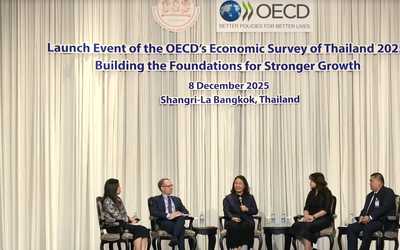Thai Inflation Dynamics in a Globalized Economy
Abstract
This paper investigates whether the observed changes in Thai inflation dynamics since the 1990s can be attributed to the process of globalization. First, this paper develops a dynamic factor model to extract a global component from underlying inflation rate movements in Thailand and its top trading partners. Based on the empirical findings, the importance of the global factor for Thailand doubled since 2001, emphasizing the growing role of globalization since then. Second, to explore the economic determinants behind the global factor, this paper estimates an unobserved components model for Thai inflation that is consistent with an Open Economy New Keynesian Phillips curve (OE-NKPC). The empirical model incorporates structural breaks to examine how the influences of domestic and global output gaps for Thai inflation changes over time. Based on the findings, long-term inflation expectations declined significantly and became well anchored at an average level of 2.4 percent shortly after the Bank of Thailand adopted an explicit inflation target in 2000. At the same time, short-run inflation movements became increasingly driven by a global rather domestic output gap. Based on an extended OE-NKPC, the global output gap still remains important beyond the direct import price channel during the 2001–2007 period. However, after the global financial crisis, the global output gap only serves to capture the direct effects of world oil price movements on inflation.









